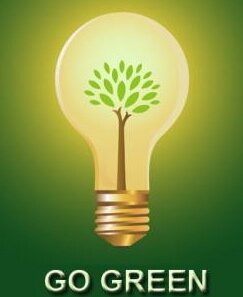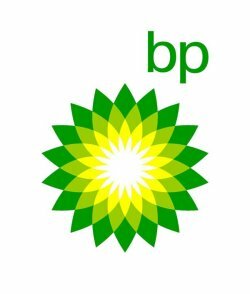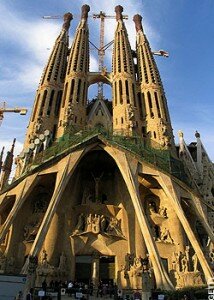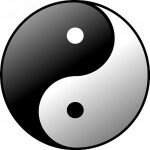Posts Tagged ‘Sustainability’
Imagining the ‘Sustainable Communicator’
Based on the scale of green marketing we see across all media today, you’d think the practice of sustainability is spreading like wildfire throughout business. And you’d be wrong.
I was reminded of the green vs. sustainability disparity as I was preparing a talk I gave last week to the Communicators Conference in Portland, Ore. In the talk I outlined a vision for what I called the “Sustainable Communicator.”  If this vision came to pass today, I believe we’d see an immediate ratcheting back on the practice of green marketing and a spike in the practice of sustainability.
If this vision came to pass today, I believe we’d see an immediate ratcheting back on the practice of green marketing and a spike in the practice of sustainability.
Let me explain.
First, consider these two studies from 2009:
- In its study entitled “The Road Not Yet Taken,” the Sustainable Enterprise Institute reviewed the public information disclosed by companies in the Russell 1000 Index and concluded: “evidence of any broad spectrum adoption of sustainable business practices is not to be found.”
- The Boston Consulting Group and MIT Sloan Management Review surveyed 2,000 business leaders worldwide as part of their study called “The Business of Sustainability.” The authors reported “a material gap between intent and action at most companies” they examined.
Which begs the question, if business is so slow to embrace sustainability, how can there be so much green marketing? I believe the explanation is this: Sustainability and green are two different concepts. They are not interchangeable. As The Natural Step Network tells us in their workshops, green is focused on details, tactics, environment and “less bad.” Sustainability is focused on whole systems, strategy, triple bottom line (not just the environment) and aligning with nature’s cyclical processes.
Retire green marketing
If I had my way, I’d retire green marketing, as I argued in a previous post. Green marketing in business is first and foremost product marketing. And as we know, you don’t have to be a sustainable business to produce a “green” product.
As the studies above indicate, businesses that adhere to the principles of sustainability and operate from a triple-bottom-line (people, planet, profit) philosophy are uncommon. That means the majority of “green” products are produced, marketed and/or sold by companies that fall far short of the sustainability ideal.
I’m not opposed to green products. We need more of them. But relying on otherwise brown companies to produce green products is at best a “less bad” situation (and clearly the primary reason for greenwashing). If we are to solve the pressing social and environmental issues of our time — clean water, peak oil, over-consumption, income inequity, population growth, climate change — we need businesses fully on board with sustainability.
Fusing brand, culture, sustainability
And here’s where the Sustainable Communicator comes in. This mythical professional fuses the practices of branding, culture change and sustainability into something completely new.
The Sustainable Communicator is a result of a fundamental shift in focus and responsibility:
- from marketing green products to building sustainable businesses
- from creating brand image to living your brand
- from specialist in communications to leader in sustainability, organizational development and branding
Yes, the Sustainable Communicator remains an expert in communications. That goes without saying. She is also a leader in sustainability, triple-bottom-line management, culture change and collaboration.
I admit this is a tall order and unrealistic in the short term. But if business is going to be truly sustainable, it needs new leaders to emerge in all disciplines, including communications. Because we know there’s a significant gap between what business intends to do and what it’s actually doing in the areas of social and environmental responsibility.
The need to close this gap is the impetus behind my firm’s recent formation of the Sustainable Branding Collaborative and 4D Branding process.
Closing the intent vs. action gap
Communications professionals have a major role to play here. We can’t continue green marketing and pretend the gap doesn’t exist. The buck stops with us, as storytellers, to only share what we know to be true and to accurately reflect where our companies are along the path of sustainability.
But storytelling alone is too passive, too removed from the ultimate need of businesses to move farther and faster toward become truly sustainable. The Sustainable Communicator is more than a storyteller. She’s a hands-on leader in transforming business. And it’s in that experience she recognizes green marketing is a thing of the past.
There’s no disguising an unsustainable business
Apologies to the duck, but if it looks like an oil company, drills like an oil company, and speaks like an oil company, then it’s probably an oil company. And no amount of green costuming can disguise its true brown nature, especially when the promise of its “product” is now a potential ecological and economic disaster.
In the past decade, BP has positioned itself as a progressive global corporation — beyond petroleum, it would have us believe. In reality, it’s a gigantic oil company that, despite its energy diversifications, is determined to keep feeding our insatiable carbon appetite and making billions for it and its shareholders along the way.
To BP and any other business in an inherently dirty industry, spare us the green preening. A fossil fuel business is not sustainable, OK? 
If only BP would be so honest. Instead it continues to lead with a brand — symbolized by a logo inspired by the Greek god of the sun and bathed in pastoral green — that implies its core value is sustaining life for the planet and all its inhabitants.
Branding consultant Lisa Merriam tells it like is:
“The much-admired green sun BP brand died this week. This is a brand that never left the marketing department. No matter what they said the company stood for, they never lived it. Despite all those smug ads about wind farms and being ‘Beyond Petroleum,’ this shows they are just like any other oil company — their green brand is as dead as all of the wildlife washing up on Louisiana shores.”
While I side with Merriam on this one, the reality is BP’s green reputation hasn’t been warranted for some time, if ever. In April 2008, Sustainable Industries magazine, citing an anonymous source, reported:
(A) top-down decision has been made to pull away from touting any “green” initiatives in the media, and in fact major “green” advertising buys have been canceled. Recent press releases focus not on alternative energy successes as they did in (former CEO Lord) Browne’s time, but on BP’s ability to keep pumping oil, maintain its oil reserves and safely conduct deep-water oil drilling.
A look at the advertising BP features on its website seems to bear this out. Beyond petroleum isn’t an environmental message; it’s an energy security message, as copy in this current BP ad illustrates:
To enhance America’s energy and economic security, we must secure more of the energy we consume. That means expanding the use of wind, solar and biofuels, as well as opening new offshore areas to oil and gas production.
BP doesn’t tout alternative energy sources to help reduce global warming — an environmental message. In fact, it clearly is trying to sway public opinion in favor of allowing more offshore drilling — a decidedly non-green initiative.
While BP isn’t hiding its desire to extract and sell lots more oil, it wants to have its cake and eat it, too: lead with energy security and have us believe it also cares about the environment. Consider this BP advertising headline, “Hydrocarbons and low carbons living in harmony.” Right. And Monsanto has some genetically modified seeds to sell you organic farmers.
BP’s website has the obligatory environmental and society sections, giving the impression of their planetary concern. But look closely at BP’s statement on sustainability:
At BP we define sustainability as the capacity to endure as a group, by:
- Renewing assets
- Creating and delivering better products and services that meet the evolving needs of society
- Attracting successive generations of employees
- Contributing to a sustainable environment
- Retaining the trust and support of our customers, shareholders and the communities in which we operate.
Hardly the rhetoric of a company committed to advancing social and environmental health through its company operations. What it tells me is BP cares most about staying in business — “to endure as a group.” The closest it comes to an environmental promise — “contributing to a sustainable environment” — is so vague as to be laughable.
BP’s two-faced approach should not be dismissed as just another instance of greenwashing. It feels more insidious, a cleverly disguised deceit on a global scale. Its incessant search for oil — even in 5,000-foot waters in the Gulf of Mexico — puts BP anywhere but “beyond petroleum.” In the name of “energy security,” BP is willing to risk the kind of ecological calamity now threatening the Gulf region. That is not a risk a sustainable company takes.
The day BP stops drilling is the day I’ll start listening. Until then, let’s make no mistake about the kind of company BP is.
Is sustainability as ‘a cause’ deterring business?
An acquaintance from my years in high tech emailed me the other day. I let him know I had left the tech marketing firm I co-founded to move my work into sustainability. I cringed when I read his reply: “That’s a great cause and I wish you well.”
My response surprised me. What’s wrong with being associated with a great cause and someone wishing me well? Nothing, of course. It’s just that sustainability is not a cause for me, at least not any longer. And wishing me well made it sound like, well, I’d need all the help I can get.
Sustainability, for me, has evolved into a mindset, a practice, a method of operating a company, a basis for business purpose and competitive distinction. Defeating poverty is a great cause. Pursuing sustainability is simply smart business.
The work of idealists and activists
I’m guessing many in business still think of sustainability, to the degree they think of it at all, as the work of idealists and ideologues. You know, those people whose ardent support for their cause make them appear a tad unreliable as business executives or consultants.
Sustainability in business is growing in awareness and practice. But the breadth and depth of adoption is not nearly as great as it needs to be. I worry the association of sustainability with environmental or social activism deters many in business from embracing it.
Causes are the perceived stock-in-trade of nonprofits, governments, NGOs and religious institutions. Businesses trade in products and services. Unless business leaders can draw a direct line from sustainability to greater success in selling their goods and services (and, fortunately, growing numbers can and have), they will leave sustainability to the green crusaders.
Causes tend to be long-term, sometimes never-ending, in nature: civil rights, smoking prevention, food safety, pollution control, wetland conservation, climate change. Modern business, perhaps to its detriment, dwells in the short term. For lots of reasons, only about half of businesses are still around five years after their founding.
Obsessing over health of business, not planet
As someone who started an employee-based business and operated it for more than 13 years, I don’t believe most owners or executives lose sleep over the health of the planet. They do, however, obsess over the health of their companies.
And it’s in that obsession where they must discover sustainability as the source for business wellbeing. Not a cause for which they have precious little time or resources to entertain. But rather a method of organizing and operating that improves their chances of keeping the doors open, bills paid, employees, customers and shareholders satisfied, and competitors at bay.
Prominent sustainability consultants Bob Willard and Peter Senge speak of the five stages and drivers of sustainability in business. Starting at a place of non-compliance with environmental standards and regulations, a company moves into the second stage of compliance in response to regulatory demand and public pressure. Stage 3 is moving beyond compliance to seeing the possibilities for ongoing cost reductions and reputation or brand enhancement. The next stage is making sustainability an integrated strategy for creating business opportunity and managing risk. The fifth stage is a mission-driven business that places sustainability at the core of its values.
Except perhaps at Stage 5, the motivation isn’t saving the planet. Businesses are driven by the desire to be in compliance, make or save money and become more competitive. They need to know they can achieve these and other goals by becoming more sustainable. That’s cause enough for them.
The sustainable virtues of slow brand
This may be the first and only time you see the words “cathedral thinking” and “slow brand” used in the same sentence. Allow me to explain.
Last week I heard New York Times journalist Andrew Revkin refer to cathedral thinking as he spoke of his reporting on the daunting ecological challenges that confront us all. The effort needed to prevent the worst from happening will take enormous long-term commitment. The kind that compelled generations of humans past to build great religious monuments over decades, even centuries, knowing they would never experience the full fruits of their labor.

Gaudi Cathedral
I think of the Gaudi Cathedral in Barcelona, whose construction began in 1882 and continues today — 127 years later and 83 years after the death of its famed architect Antoni Gaudi.
I suppose only someone like me would ponder branding as Revkin spoke. I jotted down on my notepad the words slow brand. I had never seen or heard those two words used together, although a subsequent web search shows at least one blog by the name.
There are emerging slow food and slow money movements, but no slow brand movement. That’s understandable. Who in business wants “slow” to describe anything about them?
Painstakingly constructing a cathedral is no metaphor for how most companies and their brands are built. In the hyper-competitive world of business, speed is of the essence. We don’t know where we’re going, but we’re going there fast. We want a brand — stat!
Fast brand, slow brand
Companies that embrace the principles of sustainability will quite naturally take their foot off the accelerator. Sustainability requires a fundamental restructuring in how we conduct business. By holding itself accountable for the environmental and social impacts of its actions, a sustainable business doesn’t take shortcuts to success.
How we build our company brand matters. Weak ones are little more than facades. At best their value is aesthetic. Good ones are strong foundations. They allow businesses to stand the test of time because they’re solid, substantial, dependable, built with a sense of purpose and a whole lot of sweat equity. For me this describes slow brand — not a type of brand, but an approach to building a brand that gains strength over time.
How does slow brand compare with fast brand? Let me take a crack at drawing some distinctions:
- Fast brand is led by marketing. Slow brand is led by mission. Fast brand is isolated to marketing. The rest of the company pays it little or no attention. Slow brand supports the mission of a company, its reason for being. Just as a mission’s accomplishment requires an entire company, so does the building of a brand.
- Fast brand is how we look. Slow brand is who we are. Fast brand is obsessed with appearance: cool, innovative, powerful, smart. Slow brand is committed to substance. Integrity matters above all.
- Fast brand is a promise communicated. Slow brand is a promise fulfilled. Fast brand reduces itself to messages delivered by creative marketers. Slow brand knows a company’s actions speak louder than its words.
- Fast brand is purchased. Slow brand is earned. Fast brand loves media plans: broadcast, social, print. It works inside-out. Slow brand loves satisfied customers, employees and other stakeholders. It works outside-in.
Putting the CEO in charge
The longer I work at the intersection of branding and sustainability, the more convinced I am that brand ownership cannot be left to a marketing team. Ultimate brand responsibility must rest with the CEO. This is especially important for a business that’s making sustainability a brand cornerstone — a so-called sustainable brand. Stating a commitment to sustainability heightens the expectations of a company’s practices. And only the CEO is positioned to ensure every employee fulfills the promise of sustainability inherent in the mission and brand.
If your business is striving for sustainability, you know the transition won’t happen overnight. It will take concentrated effort over a long period of time. You may not be building a cathedral, but it may help to think you are.
A question we’re not trained to ask
What is enough?
Good question. And one businesspeople rarely consider. I asked Massachusetts-based consultant Jen Cohen why.
Because you are trained to ask ‘How do I get more?’ You are not trained to ask the question (of enough). Success in business has historically meant constant accumulation. So why would you ask ‘What is enough?’ It is a heretical question, in the frame of Wall Street or the current business model. We need a model where there is room for that question.
Cohen and her business partner Gina LaRoche co-founded Seven Stones Leadership to help businesses and individuals explore the question of enough. They base their practice on the principles of “sufficiency,” an emerging area of consulting that proves to be a natural complement to sustainability.

Jen Cohen
I’ve had the good fortune of working with Cohen and LaRoche, both as a branding consultant and a client. I’ve learned that sufficiency, like sustainability, defies easy definition. LaRoche comes at sufficiency from multiple perspectives: “It’s a practice. It’s an inquiry. It’s a way of life. A challenge, a business model.”
Author Lynne Twist inspired an ongoing conversation on sufficiency with her 2003 book, The Soul of Money. Writing from 20 years experience as a successful fundraiser for nonprofits, she lays bare the myths of scarcity that most of us tell ourselves: there’s not enough, more is better, that’s just the way it is.
Cohen sees these myths play out daily in her work.
There’s not one person who comes into my office and tells the story about how sufficient they are. Not one person. The story that every single person who comes into my office tells is how they are swinging on the pendulum between inadequacy, not having enough, and excess.

Gina LaRoche
LaRoche says businesspeople avoid the question of enough as they do many tough questions. It comes down to what LaRoche calls “the diffusion of responsibility” prevalent among organizations. We tell ourselves, LaRoche says, “That’s not my problem. There’s someone else in charge. Someone else who can make that decision.” All the way up to the CEO who defers to the board.
The scarcity in sustainability
The language of the sustainability movement is often couched in terms of scarcity and excess: not enough clean air and water, not enough forested land, too much carbon pollution, not enough political will.
It isn’t a myth to say we live on a planet with finite resources. But that’s not the whole story, according to Twist. “Abundance is a fact of nature,” she writes. “It is a fundamental law of nature, that there is enough and it is finite.”
Seeing the world as abundant and finite, we revere the earth’s limited resources and pledge to manage them in a way that does the most good for the most people. From a mindset of scarcity, businesses and individuals believe there’s not enough for everyone. And may the fittest survive.
In a self-fulfilling act, the scarcity mentality drives us to make and consume more to be among the survivors, ensuring there indeed won’t be enough for all.
Marketers routinely capitalize on the pervasive sense of scarcity: Act now, supplies won’t last! Harvard marketing professor John Quelch is one proponent: “Creating the illusion of scarcity can be a smart marketing strategy.”
Valuing depth in business
Many companies are struggling with the loss of revenue, customers and employees as the recession wears on. If scarcity is our default setting, most businesses are in default mode right now.
One way to flip the switch is to imagine what operating a business from a sense of abundance, of having enough, of being enough would be like. Cohen says it would be fundamentally different. You would no longer privilege breadth or expansion, or be ruled by the axiom “if you’re not growing, you’re dying.”
I would say in a sufficiency model where the infinity rests is in depth: depth of richness, depth of interdependence, depth of creativity, depth of serving people. You can stay in the infinite possibility of your work making a difference in the world, or your work reaching people or your work mattering or your business mattering.
The practice of sufficiency works hand-in-glove with sustainability. Those of us striving to operate our businesses sustainably will not succeed if our constant guide is the experience of fear, scarcity, not enough. Even if I’m wrong, what’s the point of joyless sustainability?
So what is enough? Twist answers, “Each of us determines that for ourselves, but very rarely do we let ourselves have that experience.”
What better time than now?


